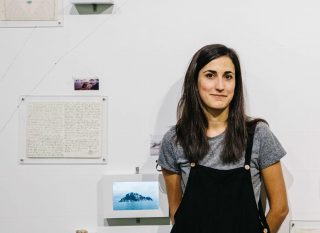I am Aly, and I am currently an Artist-at-Sea aboard R/V Falkor. My collaborator Shona Kitchen and I have worked with Brennan Phillips’ team at the University of Rhode Island to develop camera housings for DEEPi. The form of these housings is inspired by plastiglomerate, a new type of stone that is a mixture of sedimentary grain and natural debris that is held together by hardened molten plastic. Found in abundance on Kamilo Beach, Hawaii, plastiglomerate is most commonly formed when plastic waste is melted in campfires. Our camera housings are designed to be tethered to Remotely Operated Vehicle (ROV) SuBastian, and to function as sessile “organisms” living symbiotically within its architecture, observing the habits and life cycle of the ROV in order to playfully “describe” SuBastian as a hybrid species within the midwater.
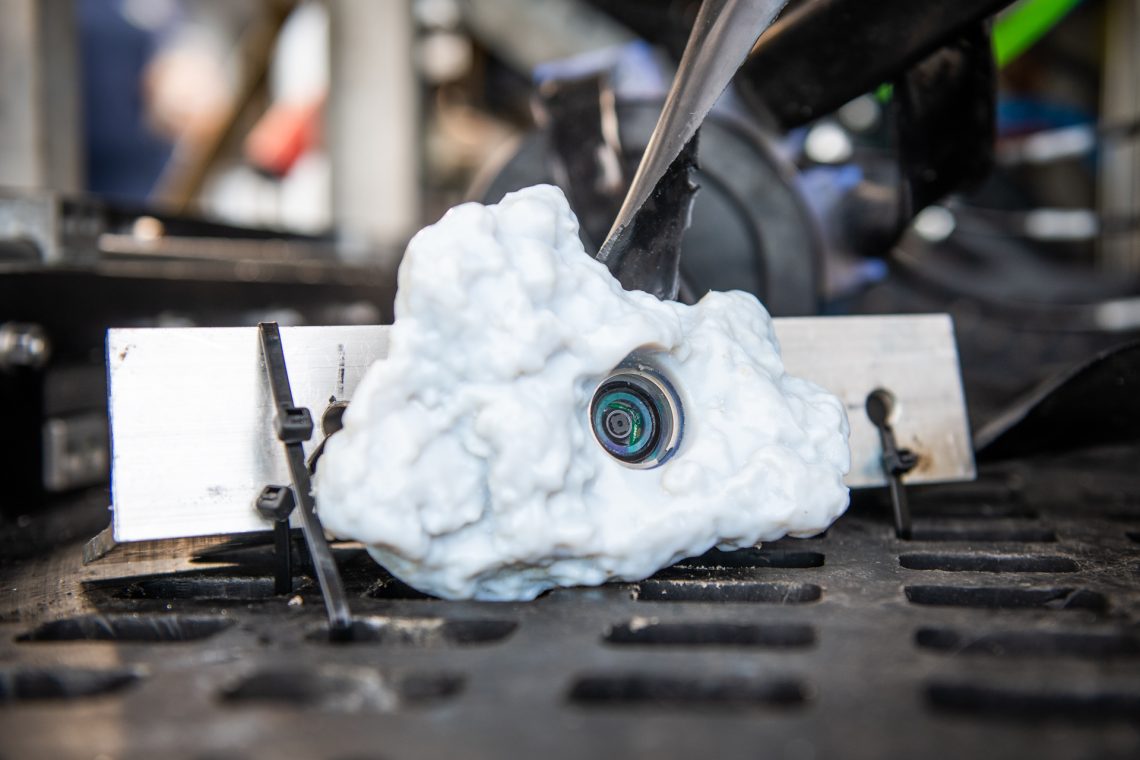
Our artistic practice is research based and often site-specific. Recent projects put a fresh spin on notions of exploration and expedition in the 21st century. Our methods of investigation reveal a latent irony. We peer curiously at the world at hand, exploiting processes of discovery that may seem absurd and humorous. Our end goal is to reveal new micro and macroscopic territories, expose hidden histories, or bring forgotten knowledge to the fore. Our collaborative work includes an exploration of the technological landscape of Silicon Valley, as well as a kayak expedition of the artificial islands of Kennedy Space Center/Merritt Island National Wildlife Refuge. I have also travelled to the Arctic Circle as a member of the Arctic Circle Artist & Scientist Residency Program.
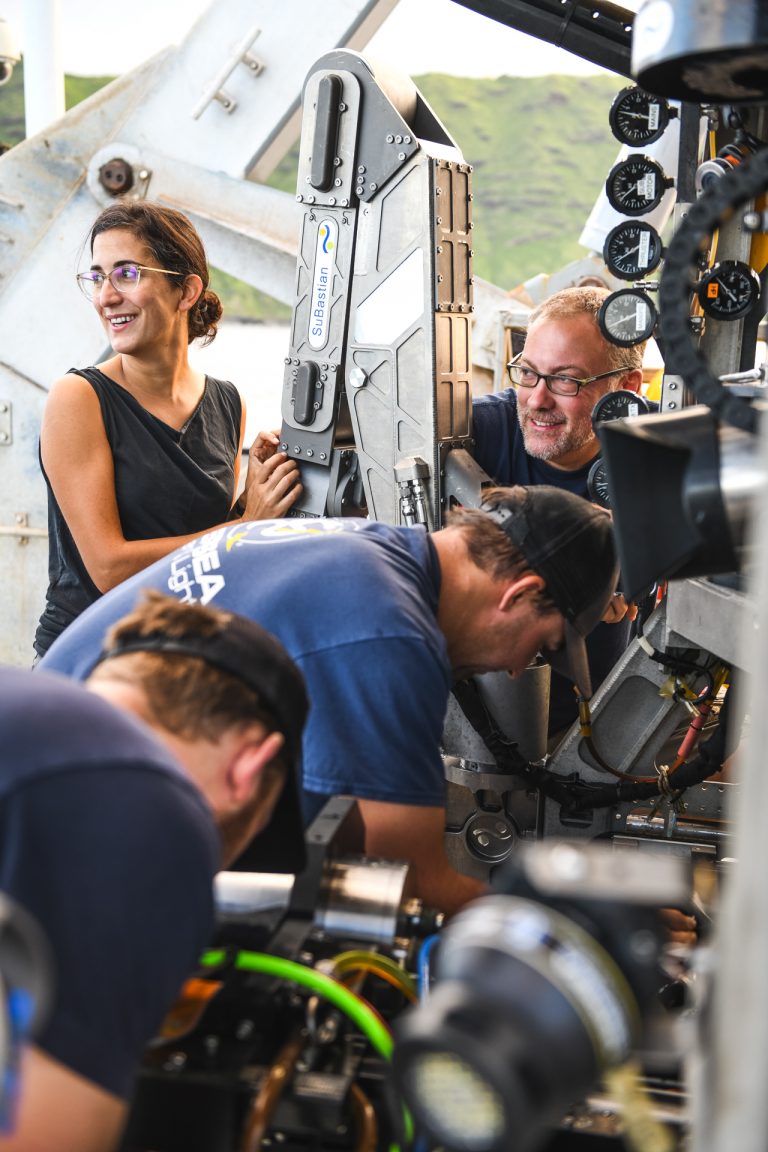
Results and Relevance
Shona and I teach at Rhode Island School of Design in the Graduate Department of Digital + Media. Informed by the fields of art, media theory, cultural studies and the social sciences, we encourage students to explore diverse subject matter and develop multidisciplinary research methodologies and creative strategies (analog or digital) to interrogate the social, psychological and cultural consequences of technology. A strong conceptual approach to research and making helps our students develop socially engaged artistic practices.
Often, we work with the same tools and technologies as engineers and researchers in fields outside of art and design. Highlighted by field research at the Woods Hole [MA] Oceanographic Institution and involving the University of Rhode Island’s Ocean Engineering department, much of our co-taught 2017-19 Technological Landscapes Research Studio has focused on how underwater robotics, hydrophones and other data collection tools transform marine environments into expressive media. When Brennan suggested Shona and I work with him as Artists-at-Sea via Schmidt Ocean Institute, it seemed like a natural fit.
Curated Collections
Our end goal is to use footage collected on the ROV SuBastian in combination with artistic fieldwork completed on location to create a contemporary, multimedia version of a cabinet of curiosity/wunderkammer that presents a collection of images, artifacts, and impressions from the oceanic water column. In their original form, enlightenment-era cabinets of curiosity presented natural and man-made objects, artifacts, and artworks in one space in order to articulate a specific vision or model of a dynamic and transforming natural history. Often considered the precursors to natural history museums, they created analogies and relationships between artifacts or representations of the natural world, and served as the starting point for speculations on philosophy, science and natural history. These collections provided the first glimpses of new species, or relayed images, renderings or accounts collected from unexplored or distant regions of the world, presenting the work of artists and scientists within the same space.
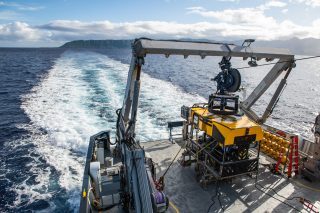
My time on the R/V Falkor will provide me with invaluable firsthand experience observing the scientific research and development process, and looking at new systems for imaging and describing midwater species. I’ll be talking to the crew about marine navigation, and observing wind, water color and weather phenomena through drawing and video as well as keeping a log book. I will also use coastline drawings to understand and record my position in time and space. I hope to spend a little time on Hawaii researching local mythologies about the midwater, either on this trip or on a secondary voyage. A second expedition with Schmidt Ocean Institute in fall 2020 will give us the opportunity to redesign our camera housings and experiment with new materials with a better understanding of how to work within the architecture of SuBastian.
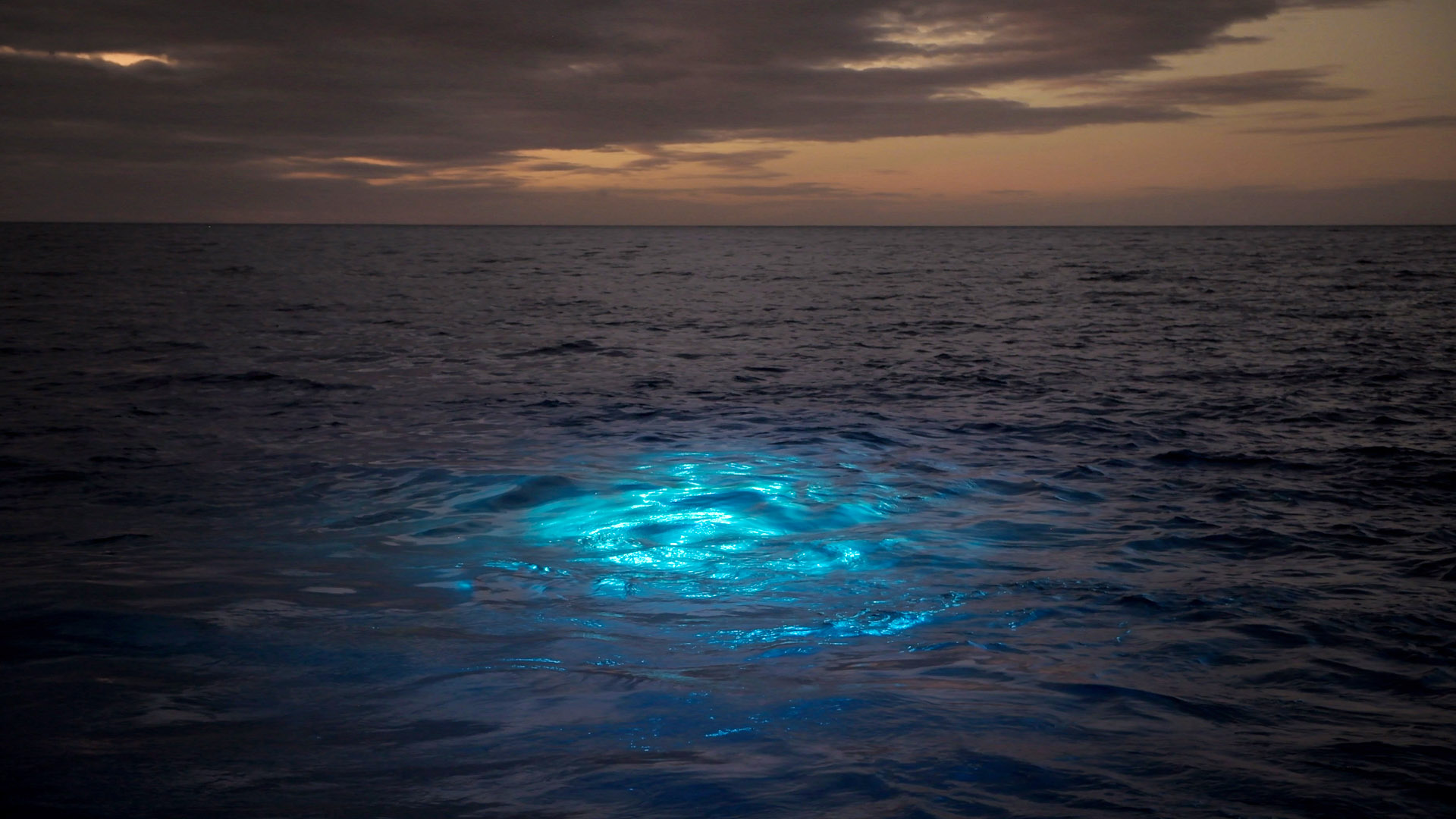
After only a few days on the ship, I am amazed by so many aspects of the expedition. Simply describing the deep blue color of the water would be an impossible task, and then there’s the cyan glow that radiates off SuBastian as the ROV surfaces at twilight after a long dive. As the midwater is the largest and least explored environment on earth and home to as many as one million undescribed species, the oceanic column is a space between known and unknown, offering a window into another world that appears to be grounded in the fantastic, despite being located on our own planet. Footage from SuBastian, URI’s DEEPi and MBARI’s DeepPIV reveal a seemingly alien space that at times appears as field of stars punctuated by undulating forms. Each camera shot reveals an organism I have never seen before (and would not be able to think up even in my wildest imagination); it is a privilege to bear witness to the unexpected.
